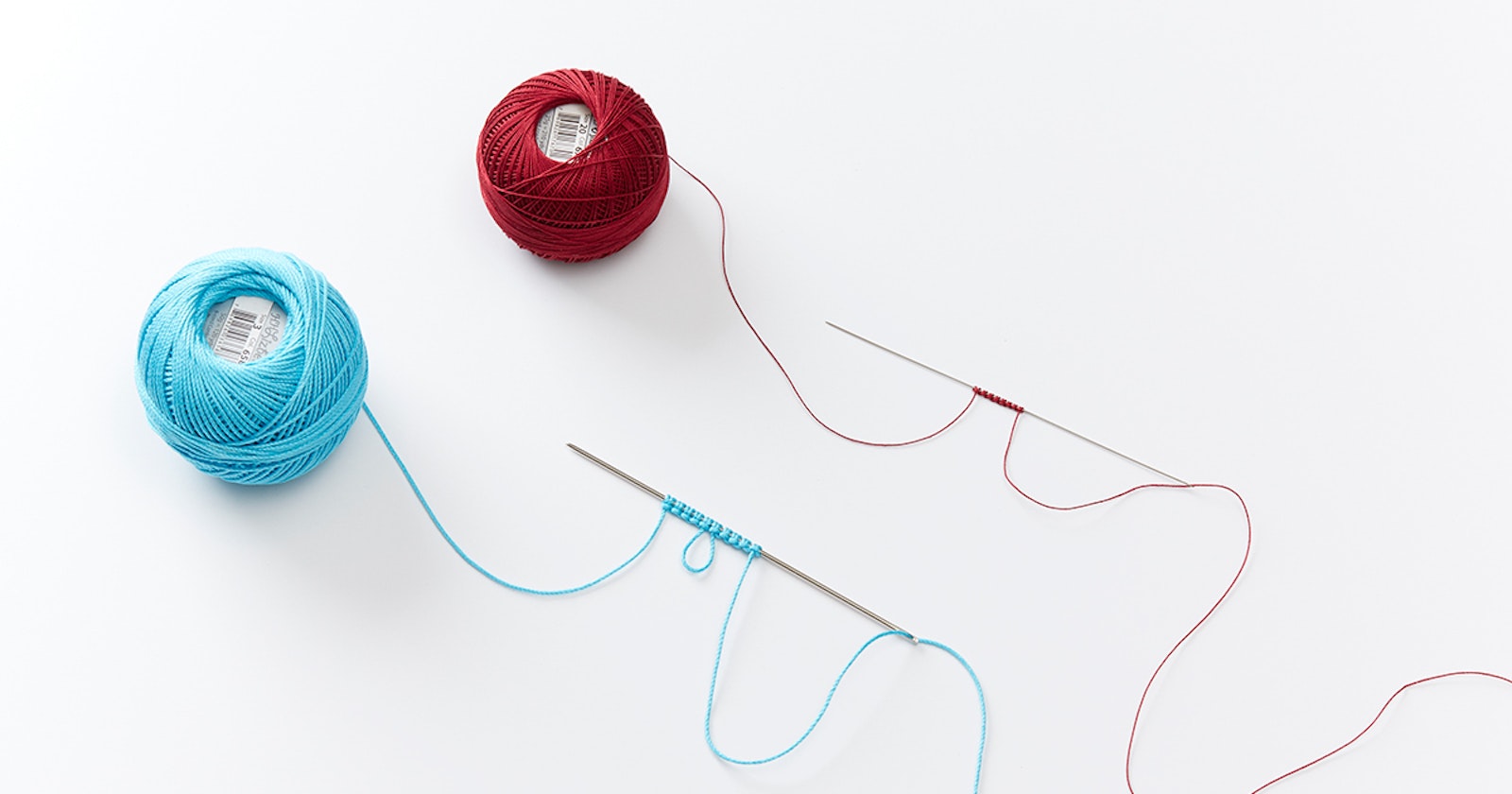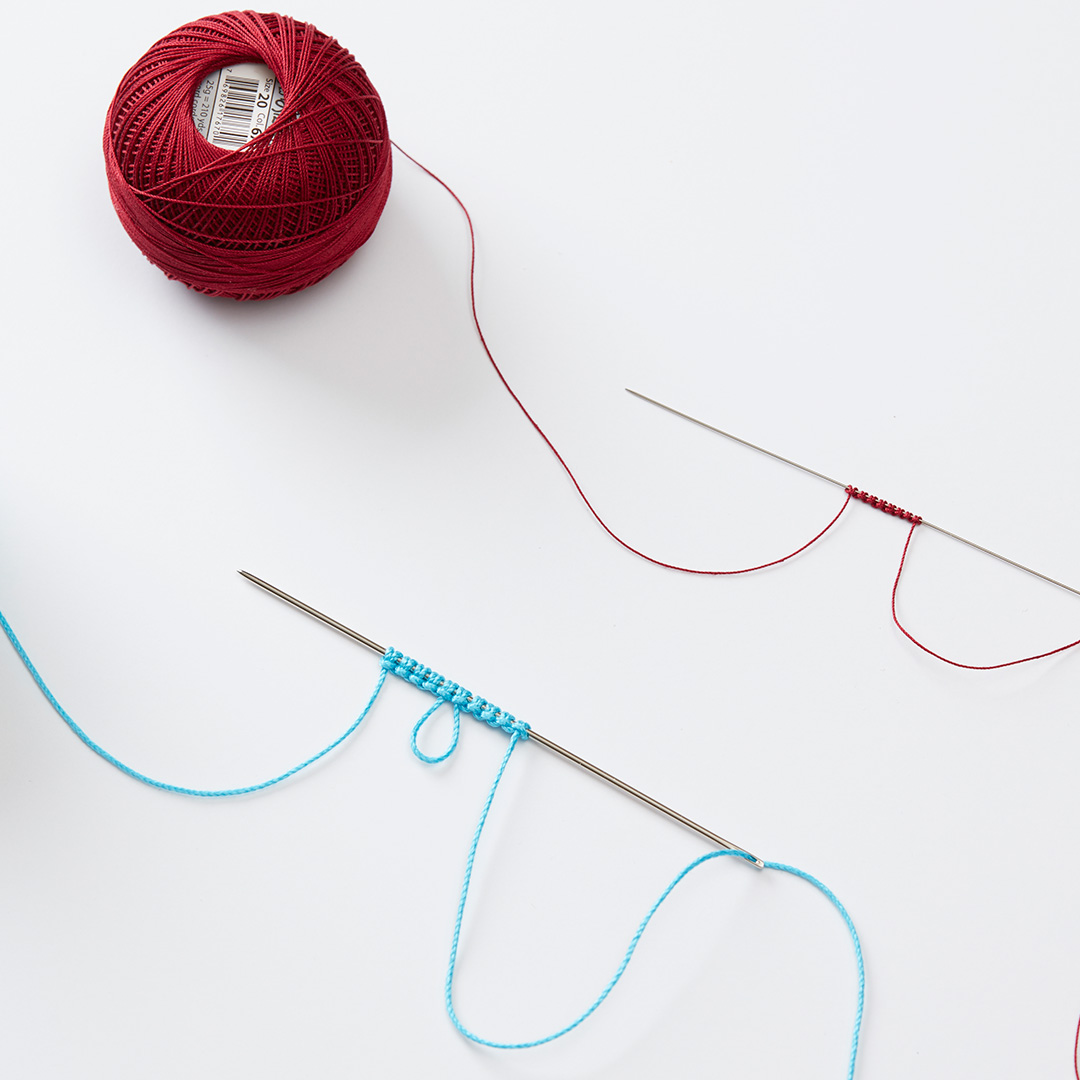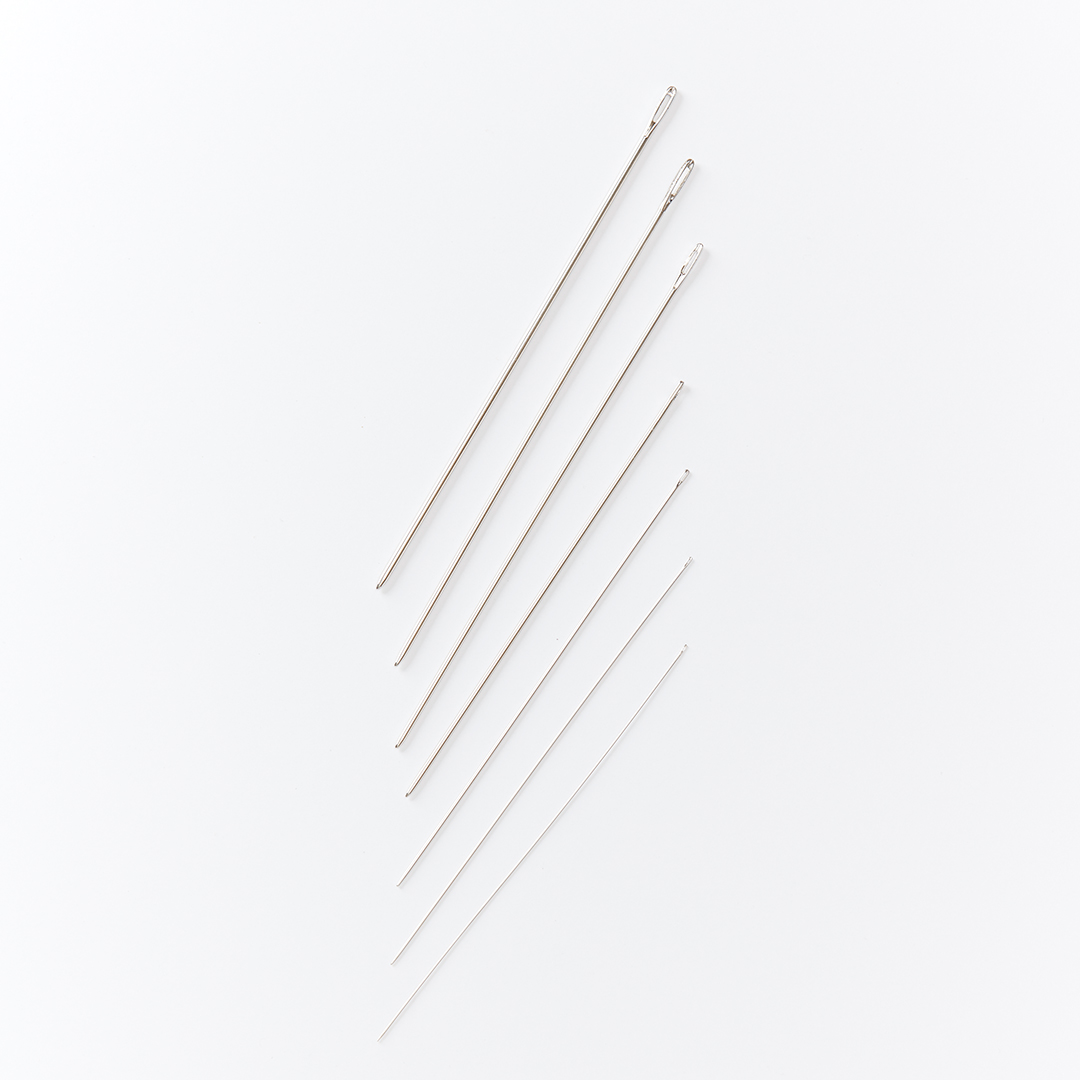Learning to tat is on my needlework bucket list. I love the look of this exquisite form of lace making. Yet, which do I learn first, to tat with a needle or shuttle? Although the finished look of these two techniques can be indistinguishable, their execution is not. The tools required are simple: thread, scissors, a crochet hook, and a needle or shuttle. Luckily PieceWork has two helpful videos available, Needle Tatting: The Basics and More and Shuttle Tatting: The Basics and More by master tatter Georgia Seitz, which makes both crafts of needle-tatted or shuttle-tatted lace accessible.
Close up of double stitch.
Needle tatting is usually considered to be the easier of the two techniques. Needles and threads come in various sizes, and their pairing is determined in part by their diameter. The needles are long and their thickness is uniform from tip to eye. Casting on a double stitch on a tatting needle reminds me of the kindergarten cast-on in knitting. The stitches are worked firmly on the fine needle, yet the stitches are only as fine as the needle used. Needle tatting uses a shorter length of thread; hence there are more ends to weave in. Also, one must be careful that the friction from working the stitches doesn’t abrade the thread. However, beads are easier to add to needle tatting, making it a good choice when the lace needs to be embellished.
Plastic tatting shuttles.
Shuttle tatting, on the other hand, uses no needle. You can work as fine as the thread gauge used. Shuttles come in all shapes and sizes made from plastic, wood, metal, and more. Also, shuttles hold a larger amount of thread, which means fewer ends to weave in. Although shuttle tatting can feel awkward at first, with practice, both hands, choreographed together, maneuver the shuttle and thread to create intricate and delicate rings and picots. In her shuttle tatting video, Georgia Seitz cleverly uses shoelaces in black and white to demonstrate the basic stitch called “the flip,” a technique that often frustrates beginning tatters.
Tatting needles sizes, left to right: 0-0, 1-0, 2-0, 3-0, 5-0, 7 fine, and 8 extra fine.
Either way you tat, tatting creates a durable lace that withstands repeated use. When attached as an attractive edging to a piece of fabric, tatting will often out live its woven counterpart, living a second life restitched to a new textile. Whether you choose needle or shuttle, tatted lace makes beautiful lace collars, edgings, jewelry, pincushions, baby hats, and more. Check another skill off your own needlework bucket list.
Happy tatting! Elizabeth
Featured Image: Elizabeth’s first attempts at needle tatting with size 20 thread in red on a #7 fine needle, and size 3 in turquoise thread on a #3-0 needle. All photos by George Boe.
Posted July 12, 2016. Updated July 22, 2019.




